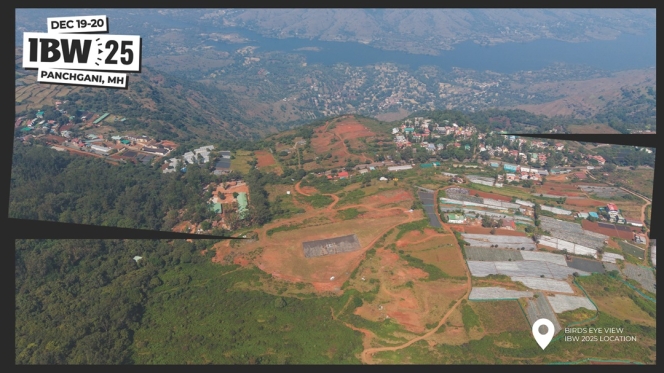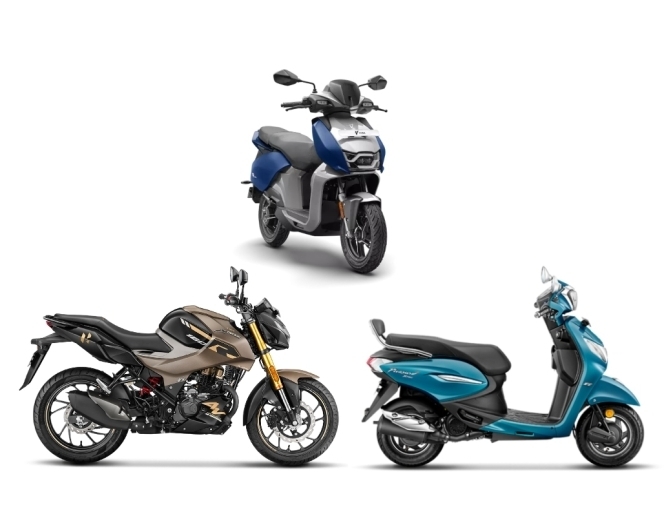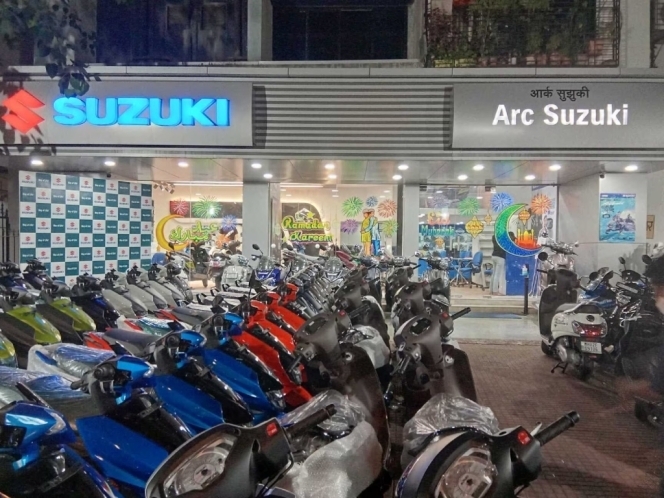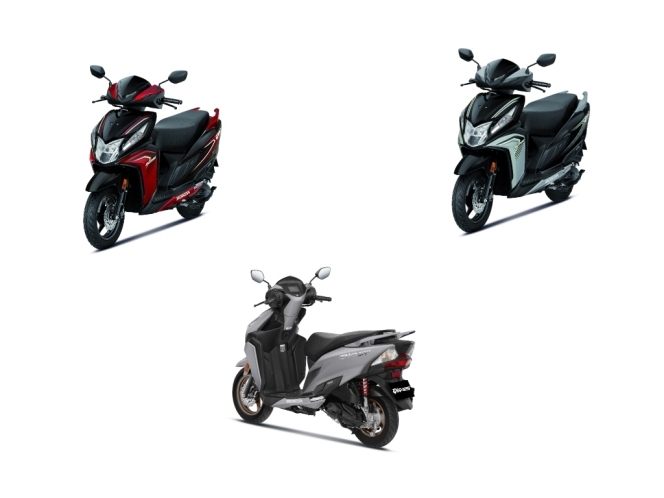Benelli India To Double sales In 2021 With New Products
- By Sharad Matade and Venkatesh Koushik
- February 24, 2021

Q: India’s two-wheeler market is highly competitive and dominated by commuter two-wheelers. How will Benelli field its products?
Jhabakh: The Indian two-wheeler market is the largest in the world as we speak. Barring the slowdown in the last one year, it is one of the growing markets at a high pace. So, I believe once we get through the tough period, we will go back to the heyday’s growth numbers.
Definitely, when the market size is big and so much at stake, one can expect a lot of competition around, which is what we see in India. Earlier the Indian two-wheeler market was completely dominated by commuter bikes, but in recent years, we are witnessing the emergence of the premium and mid-premium segments. Though the numbers are small, the segments are growing very strongly over the last few years.
Our products and services bring a different value proposition to the Indian market. Benelli is a fairly young brand in India compared to our peers, but we are confident about our products. We are currently offering products in the range between 250cc to 600cc, which is just above the commuter segment that is the150-200cc space. With our current product portfolio, we cater to different customers from the cruising, adventure, sports segments and more. So that way, we have a lot of depth in our portfolio and focus on value for money products.
Q: What consumer-centric initiatives are you planning to introduce to support the user’s requirement and enhance Benelli’s brand image?
Jhabakh: Benelli has been in India for the last two years only and sold over 5,000 units. As of now, we 35 dealers across the country. In that sense, we have been picking up a lot of recognition and becoming one of India’s fastest-growing brands.
We aim at continuing the growth with the launch of new products in 2021. The company will also increase our dealership network and retail presence across the country. The company targets to have 60 outlets by March and, from there on, we will be adding approximately two dealers every month in our network. So, the intention is to continue growing organically. With this, the brand will reach to more people and geographics increasing the overall awareness.
Apart from this, Benelli will also be focusing on riding activities to enhance brand awareness. Going forward, based on how situation permits, we have aggressive plans for different types of riding activities such as day, night and weeklong rides.

Q: How is Benelli managing the spare part supplies as many companies face issues on importing parts, especially from China?
Jhabakh: Benelli imports spare parts from multiple countries and locally. Of course, due to lockdown, there was a little bit of concern on the supply chain side.
When we started two years ago, we did not have a single local supplier. Today, we have around 20-25 local suppliers and are currently in talks with many suppliers. We aim to increase the local content in our products and reduce dependency on imports without compromising quality.
Q: What are the plans for localisation? What upgrades are expected in the production lines to increase the production capacity?
Jhabakh: Localising the content and getting Indian suppliers on board have always been our aim as it also safeguards us from global shocks, like the one we just faced. We are already working with about over 20 suppliers in India, primarily for the Imperiale 400, because that is the product which has the maximum volume for us in our portfolio.
We were in the discussions with many suppliers, but we had to halt the talks due to the lockdown. When we procure certain safety products, like brakes, abs, the process of testing can take as long as nine months to one year and requires extensive testing before we can change to a new supplier.
On investments and up-gradation, we utilised the lockdown period to upgrade our capacity at the plant. We now have a capacity of 30,000 units a year.
Q: In India, dealers make less than one percent profit in the business. How are you taking new dealers onboard and on which cities Benelli will focus?
Jhabakh: Benelli takes dealerships and their profitability very seriously. We keep a good balance between the investments that somebody makes into the business and returns. We have been through the closure of four to five months and still managed to hold on to all the dealers in our network. In fact, we have added dealers to our network through digital launches. So, people continued to showcase their confidence towards the brand, the products, and the company’s future strategy.
We will expand on pan India for the dealership, having a major focus on the north and west India. We already have a good presence in the south in terms of dealerships.
Q: Common issue plaguing the premium two-wheeler industry is service reliability. How does the company plan on winning customer confidence with service?
Jhabakh: We also don’t want our customers to face after-sales or service issues. If you buy an Imperiale today, you get a three-year warranty along with two years of free service. Apart from that, we have roadside assistance, AMC and pick and drop facilities. We also keep a smooth supply of service products focusing on our customers’ after-sales experience, so that at any given point of time, they do not have to worry about a part failure.
Since our bikes are specialised, it requires specialised training to service them. We have an internal training programme and a training facility that train all our dealership staff, especially for new dealerships or new products. In fact, during the lockdown, we converted all our training into e-training modules. We have created video modules which have helped us to save time and money.
We also have a concept called the Flying Doctor, where if a dealership is facing a problem which is not getting resolved for two or three days by the dealership staff, then highly technically trained personnel will be deployed to the dealership to resolve the problem. We are also now coming up with DIY videos and DIY sessions at our dealerships across the country where we invite customers to come down and learn how to do basic maintenance on their bike and share tips to improve the bike’s life the ride quality.
 Q: At present, Benelli has only one model Imperiale 400 complying with BS-VI emission norms. Tell us about your plans to upgrade the other models to the new norms?
Q: At present, Benelli has only one model Imperiale 400 complying with BS-VI emission norms. Tell us about your plans to upgrade the other models to the new norms?
Jhabakh: Initially, the plan was to launch the BS-VI Imperiale in April 2020 and just before the festival, we wanted to upgrade the rest of the portfolio. But we had to shelve our plans due to COVID. We were able to introduce the BS-VI bike only in August post which we did not want to bring in any other bikes towards the end of the year. So that’s why we decided, from January 2021, we will start launching the rest of our BS-VI portfolio. Between January and August, we will be launching five to six new models in BS-VI. Initially, we plan to bring back the 500cc category. So, you will have the TRK and Leoncino come back, after that we will move on to the sub 500cc category.
We are planning to expand our 250cc portfolios. We launched the Leoncino 250 last year and strongly consider bringing other variants in the 250cc range.
Q: Would you be introducing electric bikes in India? Elaborate.
Jhabakh: Benelli, as part of the global portfolio, has e-bikes in certain countries. We have been closely monitoring the e-bike market in India. I think the Government of India has also been putting a very strong push for e-bikes in India. So, in 2021 we will focus on reintroducing our BS-VI portfolio and based on how the e-bike market develops and matures, we will plan for it later.
Q: How important is digitalisation for Benelli?
Jhabakh: Digitalisation has always been important. All the companies are moving towards being more digital, and the pandemic has only uplifted the pace for digitalisation. The entire buying experience has a couple of steps. At first, people do their research on the products, prices, finance and comparisons online. We have been investing a lot of our time and money in the digitalisation. We are trying to make information available to consumers on platforms that they are accessing. In fact, when we had launched the Imperiale 400, we made bookings available online.
In the second step, customers want to complete the transaction in an offline mode where they would like to come down to the store and get a feel of the bike, brand and environment before making the final decision and that is where our dealer network becomes very important. I do not see the entire buying process moving digitally, but a large part of the information process that goes into the buying decision will definitely move to digital. We will keep enhancing connected technologies in our products.
Q: Do you have any plans to set up a manufacturing facility?
Jhabakh: To have a manufacturing facility, it requires large investment and sales numbers for it to be viable. In 2019, we grew 100 percent compared to a year ago. Despite the lockdowns, we clocked a growth in 2020. For 2021, we target to grow by 100 percent. So, our idea is to continue improving sales numbers with the increasing level of the localised content. Once we reach a certain number sales per month, then there is viability to have a manufacturing plant.
Q: With complete localisation, by how much do you expect the overall price to come down?
Jhabakh: It is a difficult question to answer because localisation happens over time. Localisation needs investments and it is not about just replacing an outsider supplier with a local one. So, the answer is not that straightforward that the price will drop by this percentage. Localisation and price drop go hand in hand. The more you localise, the more the price will come down.
Q: What are the challenges in the business?
Jhabakh: I think more of the recent challenges have been with the lockdown and the lockdown’s subsequent opening. We import parts from many countries globally and because of the different rules in each country and states within the country, there has been a huge disruption in the global supply chain.
Also, the global restart has not been very kind. Freight expenses have shot up through the roof and the container availability has become very difficult. Parts that were taking 25 to 30 days transit time are now taking 45 to 60 days of transit time. But we see this as restarting issue and every week it is getting slightly better. We are hoping that maybe by February or March the market should stabilise. Also, after the festival season, many people have started buying again, be it bikes or cars or electronics or cloths. So, consumer spending capability is now slowly beginning to come back. If we continue in this format, and if there are no more shocks in the market, I think many of these challenges will go away. (MT)
India Bike Week Shifts From Goa To Panchgani Hills For 2025 Edition
- By MT Bureau
- December 02, 2025

India Bike Week (IBW), presented by Gulf Syntrac, has shifted its 2025 venue from Goa to Panchgani, Maharashtra. The move, executed due to the rescheduling of Zilla Parishad elections in Goa to the IBW dates, means riders will now converge in the Deccan hills on 19th and 20th December 2025.
IBW 2025 will transform Panchgani into a high-altitude playground for riders, featuring new trails, cooler winds, bonfire nights, camping and after-parties. The edition promises IBW’s line-up yet, offering motorcycling experiences across multiple terrains – from hill climbs and mud trails to manufacturer-led road tests.
Martin Da Costa, Founder and CEO, Seventy Event Media Group, said, “As we celebrate 12 years of India Bike Week, it’s incredible to witness how this festival has grown into one of the world’s most spirited motorcycling gatherings. Although circumstances pushed us to shift venues this year, our ethos remains the same – community, adventure, and the freedom to explore. Panchgani offers us a fresh canvas and IBW 2025 is shaping up to be our most exciting edition yet.”
IBW’s 12th edition includes showcases such as the Endurance Stunt Show by Pol Tarres powered by Gulf Syntrac, the Wheelie Experience by Aprilia and India’s Test Ride Arena featuring the majority of India’s premium motorcycle line-up, now including a showcase by the Gulf TrackHouse MotoGP Team.
Over 10 riding experiences await, from the Pulsar Stunt School to a dedicated Kids’ Mini Moto Track by Vida’s Dirt-E K3, along with masterclasses led by expert creators and overlanders.
Competitive racing will feature on FMSCI-backed tracks such as the IBW Hill Climb by Reise Moto and Harley-Davidson Flat Track Race.
The Skoda Kodiaq All-Wheel Drive Track makes its debut, offering driving and off-road challenges.
Presented by Carlsberg Elephant Strong Soda, the festival’s music line-up includes performances by King, Karan Kanchan, Sugga Honey, along with Harley-Davidson Rock Riders’ Music featuring Antariksh.
The BIG TRIP presented by Gulf Syntrac returns with a compelling line-up. Twelve speakers – including global overlanding legends Simon & Lisa Thomas, Elspeth Beard, Zubin Jaafar and storytellers Kshitij Saxena, Gautham AG, Candida Louis and Maral Yazarloo – will bring narratives of grit, resilience and exploration.
The Ladakh Tent presented by Carlsberg Elephant Strong Soda hosts discussions, including ‘India on Two Wheels,’ a Storytellers Roundtable, ‘RTW 101,’ and ‘Women in Motorsports.’
The Jameson Connects Howling Dog space brings together creators, rider groups, and lifestyle influencers.
Hero MotoCorp Clocks 31% Sales Uptick In November Amid Continued Demand
- By MT Bureau
- December 02, 2025

Hero MotoCorp, the world’s largest manufacturer of motorcycles and scooters, registered dispatches of 604,490 units in November 2025, marking a 31 percent YoY growth.
In the domestic market, the company sold 570,520 two-wheelers, up 30 percent YoY, as against 439,777 units sold last year. On the exports front, the sales came at 33,970 units, as against 20,028 units, marking a 70 percent increase YoY.
This performance sustains the growth momentum following the festive season, driven by positive consumer sentiment across urban and rural markets, supported by GST benefits and a macroeconomic landscape.
VAHAN registrations showed strong domestic demand, with 886,330 units registered in November 2025. Retail registrations grew 26 percent to 1,882,739 units for the combined period of October and November 2025, reflecting dealership and consumer demand.
The company's performance was supported by the success of new models such as the Xtreme 125R, GlamourX 125, Destini 110, and Xoom 160.
VIDA, powered by Hero, sustained its growth trajectory with 12,199 VAHAN registrations, reflecting a 66 percent growth compared to the same period last year. The company strengthened its position in the EV sector, capturing a 10.4 percent market share. The VIDA Evooter VX2 continued to drive retail growth and sales volume, and the company also expanded the line-up with the VX2 Go 3.4 kWh variant.
Suzuki Motorcycle India Sells 122,300 Units In November 2025
- By MT Bureau
- December 01, 2025

Suzuki Motorcycle India (SMIPL), the two-wheeler subsidiary of Suzuki Motor Corporation, Japan, has announced its sales performance for November 2025, recording total sales of 122,300 units. This marks a strong 30 percent YoY growth over 94,370 units sold in November 2024.
In the domestic market, the sales touched 96,360 units last month, which was 23 percent growth over 78,333 units a year ago.
On the exports front, sales grew 62 percent reaching 25,940 units in November, up from 16,037 last year.
Additionally, SMIPL’s aftersales business continued gaining momentum with spare parts sales of INR 955 million in November.
Deepak Mutreja, Vice-President – Sales & Marketing, Suzuki Motorcycle India, said, “We are grateful for the growing confidence our customers place in Suzuki. Their support, along with the dedicated efforts of our dealer network, continues to drive our growth. Alongside strengthening our presence, we are also expanding customer engagement initiatives and experience-led programs to bring riders closer to the brand. We will continue to invest in enhancing accessibility, after-sales experience, and community-building as we work towards sustained growth.”
Honda Motorcycle & Scooter India Clocks 25% Sales Growth In November
- By MT Bureau
- December 01, 2025

Honda Motorcycle & Scooter India (HMSI), one of the leading two-wheeler manufacturers in the country, has reported wholesales of 591,136 units in November 2025, up 25 percent YoY.
The total sales figure for the month included 533,645 units in domestic sales and 57,491 units in exports.
During the period, the automaker continued its commitment towards road safety by organising awareness campaigns across various cities nationwide, encouraging responsible road behaviour through interactive learning.
HMSI also celebrated Children’s Month with a Kids Carnival across all its manufacturing facilities, Traffic Training Parks (TTPs), and Safety Driving Education Centers (SDECs). The initiative, themed ‘Safety Explorers: Journey Through Traffic Land,’ aimed to make road safety learning engaging for children while promoting safe habits from an early age.






Comments (0)
ADD COMMENT